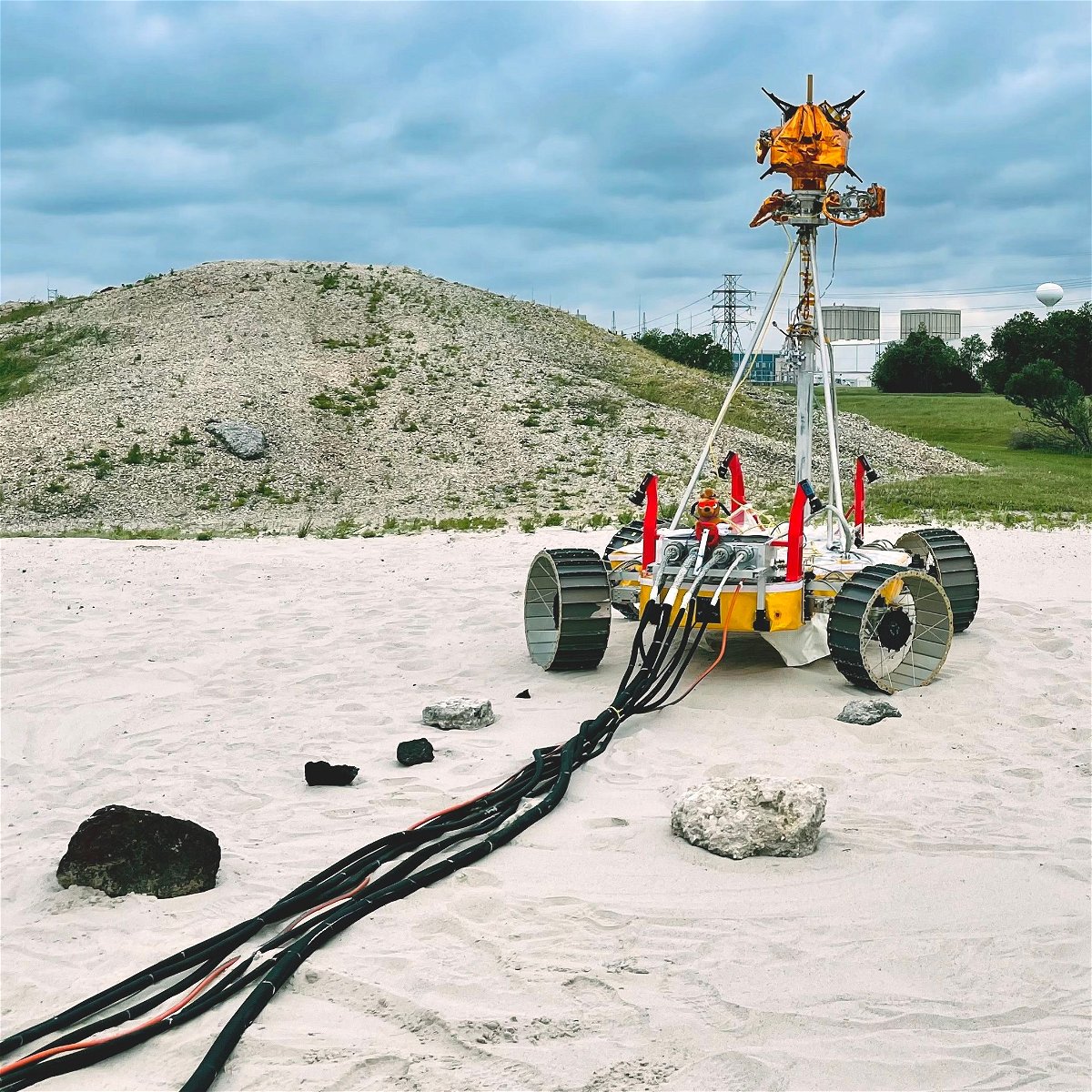Meet the lunar rover that will venture to the moon’s south pole

Engineers test a prototype version of VIPER at NASA's Ames Research Center in Mountain View
By Ashley Strickland, CNN
(CNN) — At the heart of human nature is a desire to explore. Nowhere is that more evident than our quest to journey beyond Earth.
This week, the AX-2 mission carried four travelers to the International Space Station, including former NASA astronaut Peggy Whitson and stem cell researcher Rayyanah Barnawi, the first woman from Saudi Arabia to travel to space.
Virgin Galactic also returned its supersonic plane to the edge of space for the first time since 2021, with two pilots and a crew of four Virgin Galactic employees aboard the test flight.
And preparations are underway as humans prepare to return to the lunar surface in 2025 — and they’re going to get a little help from some robotic explorers.
Lunar update
Engineers are busy constructing a rover set to land at the lunar south pole in 2024.
About the size of a golf cart, VIPER, or Volatiles Investigating Polar Exploration Rover, will search for ice, collect and analyze samples, and map how much ice may exist beneath the moon’s surface. A hardy, clever design will allow the robot to handle the extreme conditions of a place humans have yet to explore.
The rover’s findings could help sustain a human presence on the moon by allowing astronauts to collect drinking water and uncover other resources. And it’s not the only lunar rover in the works.
Meanwhile, a NASA orbiter captured images of what appears to be the impact site of the Ispace Hakuto-R Mission 1 lunar lander after it failed to touch down safely in April on the moon’s surface.
A long time ago
Ancient latrines unearthed in Jerusalem have revealed one of the health issues Iron Age people faced 2,500 years ago.
Traces of dysentery-causing parasites were found by an international team of archaeologists in cesspits beneath two stone toilets installed in elite households.
The findings are the earliest evidence of a disease called Giardia duodenalis, known for causing diarrhea, abdominal cramps and weight loss.
The Middle East region is where some of the first large towns appeared as humans established settlements and began to farm and domesticate animals. But this growth also meant that bustling cities such as Jerusalem were a hotbed for germs.
Fantastic creatures
Scientists have uncovered nearly 400 new species in Southeast Asia’s Greater Mekong region, but this wildlife may already be under threat of extinction due to human activity.
Researchers worked across the region, which includes Thailand, Myanmar, Laos, China, Cambodia and Vietnam, from 2021 to 2022, according to a new report from the World Wildlife Fund.
Among the discoveries is an orchid that resembles a character from “The Muppet Show,” a gecko named for a mythical tree nymph from Thai mythology and a color-changing agama lizard.
Meanwhile, new research found that the global loss of wildlife is “significantly more alarming” than previously thought as nearly half the planet’s species experience rapid population declines that could lead to a “sixth mass extinction.”
Once upon a planet
Around 250 million years ago, mammalian ancestors reigned supreme before the dinosaurs — and they struggled to survive during “the Great Dying.”
Massive volcanic eruptions created catastrophic climate change that led to the worst mass extinction on Earth. Over the course of 1 million years, 90% of life disappeared.
A new fossil discovery has revealed one of the unusual creatures that lived during this upheaval.
The saber-toothed Inostrancevia was a tiger-size animal that had the skin of a rhino or elephant and looked reptilian. And the prehistoric predator made an unbelievable trek to survive rapidly changing environments.
Other worlds
A solar telescope has captured otherworldly glimpses of the sun’s surface in a stunning set of new images.
The National Science Foundation’s Daniel K. Inouye Solar Telescope, on the island of Maui in Hawaii, took incredibly detailed photos of sunspots over the past year.
The images showcase solar phenomena such as “light bridges” that span across sunspots as well as the fine, glowing structures within and surrounding these cool, dark regions.
Meanwhile, new research has suggested that Saturn’s iconic rings could disappear within the next few hundred million years — and the astronomically young rings might have formed while dinosaurs roamed the Earth.
Discoveries
You have to see these stories to believe them:
— New York City is sinking under the weight of its million-plus buildings — as well as a mystery cause that researchers have yet to unravel.
— Hvaldimir, a beluga whale wearing a special harness that can hold cameras and believed by some experts to be a “spy” trained by the Russian navy, has appeared in a densely populated part of Norway.
— A man with paralysis can walk again more than a decade after his motorbike accident, thanks to Swiss scientists who developed a new medical implant.
The-CNN-Wire
™ & © 2023 Cable News Network, Inc., a Warner Bros. Discovery Company. All rights reserved.

